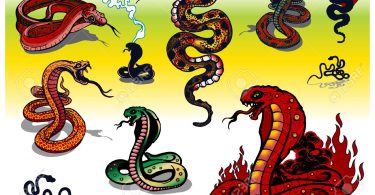ABSTRACT
Graphites(Black Lead) is especially active in patients who are rather stout of fair complexion with a tendency to skin disorders and constipation. (1)The main theme of graphites is the blandness of the entire system. (2) Graphties compared with other allied remedies.
KEYWORDS
Graphites,emptiness,irresolute,fear,music,comparison
INTRODUCTION
Graphites (otherwise called Black Lead, Plumbago) like all the carbons, this remedy is an anti-psoric of great power, this is a mineral carbon in which there is a small percentage of iron is present. Triturations are prepared from the finest English drawing pencil’s lead.1 The drug was first proved by Hahnemann.
In his introduction to the proving, Hahnemann says: “The purest Graphite is a kind of mineral carbon. He continues: “The first idea of its use in medicine was given to Dr Weinhold, during his travels in Italy, by some workmen in a looking-glass factory in Venice, whom he saw using Graphites as an external application for the removal of eruptions.” (3)
MENTAL MAKEUP OF GRAPHITES
KEYNOTE-BLANDNESS:
The main theme of Graphites is BLANDNESS – a dullness and heaviness on three levels. It is as if these patients are “thick-skinned” or “callused”. They seem to have a barrier which prevents stimuli from the outside world from reaching them and thus resulting in a blandness of the entire systems. (2)
In Graphites, there is an absence of thoughts. They feel that nothing is happening inside. Sometimes this may also be described as a sensation of fullness inside the head which blunts the thinking. (2)
A NOBLE PERSON:
Graphites have a very stable personality and they feel they are the centre of their own world. They experience everything as a matter of course, they are who they are and that’s it. ‘I am O.K. the way I am’. This side will be most prominent if they have received lots of encouragement during their childhood. (4)
Their sense of self-worth is well developed. One way, the self-worth may be expressed as shyness in graphites people. (4)
But these people become extremely emotional and sentimental when they lost their stability. This can be caused by grief such as the loss of one of their parents, and it may only be a temporary state. But it can also turn into a permanent state of having to depend on someone else because they can’t get a grip on their emotions anymore. (4)
SAY NO TO WORK:
Graphites shows a lack of sensitivity to any stimulus – body, emotions, and intellect. The mind is dull, lethargic, slow to receive information. (2)
There is a marked dread of mental work and the patient becomes very restless when attempting close mental work. (5)
Another characteristic of Graphites is fidgetiness while at work. They cannot sit in one place long but must rove about being impelled by anxiety, solicitude, and fear. (6)
I CAN’T DECIDE IT!!
Another result of Graphites labile emotions is irresolution. As already mentioned, Graphites people become more emotional when the lost their stability and this can also impact the patient’s intellect, causing her to agonise over the smallest decisions. At these times she may rely heavily on others to make up her mind for her. (7)
Eventually, they become aware that their mind is not working properly. This awareness then leads to various anxieties. Extreme anxiety even to desperation. (5)
FEARFUL FUTURE:
The fear of graphites mainly depends on his/her upbringing and it is expressed as, she may be shy of people, afraid of adventurous physical activities like sailing and rock climbing, nervous when her husband drives the car a little too fast, and oversensitive at night to the slightest noise. (7)
The commonest fear in Graphites people is a general fear of the future and this fear may sometimes inhibit action. There is a tendency to be pessimistic, or rather, to fear the worst when considering the future. The same fearfulness can be seen in Sepia, Calcarea, Arsenicum and Phosphorus.
This is not so much the fear of insanity that is so characteristic of Calcarea. Rather, it is a fear of some misfortune impinging upon them from the outside world.
They also have a fear of losing their loved ones. Graphites people are deeply attached to their family and friends, and they are usually very aware of their dependence upon them. (7)
MUSIC HURTS:
In Graphites, listening to music is an actual aggravation. (2) This is indeed an abnormal trait as usually human nature is susceptible to music on the pleasing side. (6) Whenever Graphites patients are in an unhappy mood, music makes them feel even more miserable. (2)
In the case of Graphites, the music tends to deepen the inherent trait of sadness that lurks in her system.6 The graphites sadness is so great that she thinks only of death and salvation. (5)
COMPARATIVE STUDY
GENTLENESS:
Graphites people have a kind of innocence. They are uncomplicated without being stupid, much as Calcarea people are. They tend to say what they think, and to be straightforward and free from guile, unlike Natrum Muriaticum, Sepia and Ignatia, whose subtle minds can deliberately manipulate others for their own purposes. (7)
TIMIDITY:
Graphites differs from Calcarea in being more emotional and a little more introspective and shy. Her shyness (the vast majority of Graphites people are female) and her softness resembles that of Pulsatilla at first glance, but she is generally a deeper, more subtle person than Pulsatilla. (7)
MOODINESS:
Graphites may exhibit the whole spectrum of negative emotions when she is upset, and like Pulsatilla, she is not able to hide them, even when she wants to. These gentle types hate disharmony, and will generally forgive and make up very quickly, providing the other person will meet them halfway.
In contrast, Natrum Muriaticum, Ignatia and some Sepias are more assertive when they express their anger. They are quite capable of exploding verbally and even physically, unafraid of the response they may encounter. (7)
CONCLUSION
Graphites is not often thought of as a constitutional remedy, but there are people who resonate to this remedy throughout most of their lives, and this should not be surprising since it is a remedy for chronic complaints. Graphites is easily missed as a constitutional type is that Graphites people have few if any striking features. (7)
Correlating with the blandness of intellect in Graphites, it is interesting that such patients do not seem to degenerate into deep mental pathology. They may live to old age without any particular mental imbalance other than the blandness. (2)
REFERENCES
1. Murphy Robin, Homoeopathy Remedy Guide, Encyclopaedia Homoeopathica.
2. Vithoulkas George, The Essence of Materia Medica, B.Jain Publishers(P)Ltd.,New Delhi,Reprint Edition 1994,pg.74-75,78.
3. Dunham Carrol, Lectures on Materia Medica, B.Jain Publishers(P)Ltd.,New Delhi, Reprint Edition,pg.393.
Scholten John, Homoeopathy and Elements, Encyclopaedia Homoeopathica.
4. Kent James Tyler, Lectures of Homoeopathic Materia Medica, B.Jain Publishers(P)Ltd.,New Delhi,Reprint Edition 1995,pg.555
5. Choudhary, N.M., A study on Materia Medica, B.Jain publishers(P) Ltd., New Delhi, Reprint Edition,2006,pg.321
6. Bailey Philip M., Homoeopathic Psychology, Encyclopaedia Homoeopathica.
About the Author
Dr A.T.SENTHILKUMAR,B.H.M.S,M.D(HOM)
Professor, PG Guide, Head of Department, Department of Materia Medica, Vinayaka Mission’s Homoeopathic Medical College & Hospital, A Constituent college of VMRF-Deemed to be University, Salem, Tamil Nadu.
Dr DHIVYA.R
Post Graduate Student, Department of Materia Medica, Vinayaka Mission’s Homoeopathic Medical College & Hospital, Salem.





